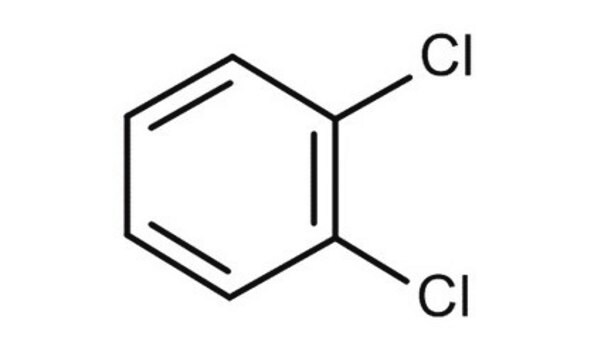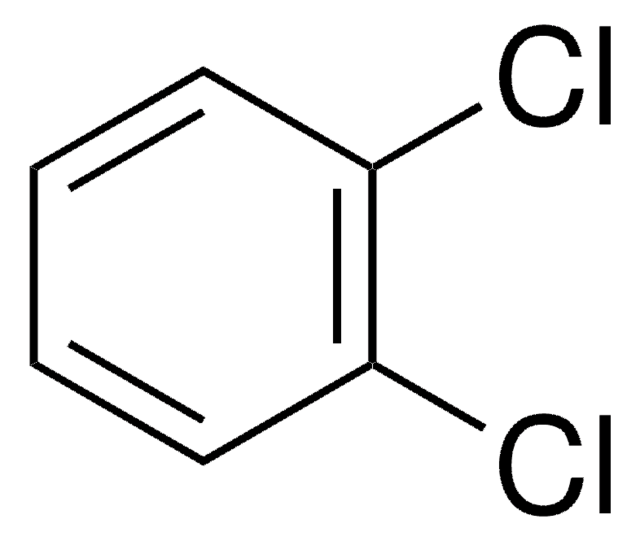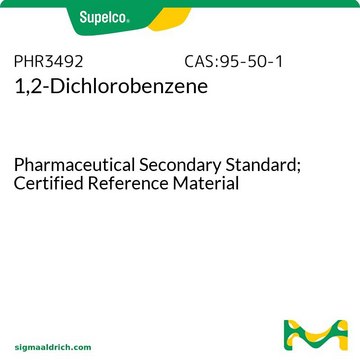Kluczowe dokumenty
D56802
1,2-Dichlorobenzene
ReagentPlus®, 99%
About This Item
Polecane produkty
klasa czystości
reagent
Poziom jakości
gęstość pary
5.1 (vs air)
ciśnienie pary
1.2 mmHg ( 20 °C)
1.6 mmHg ( 35 °C)
linia produktu
ReagentPlus®
Próba
99%
Formularz
liquid
temp. samozapłonu
1198 °F
granice wybuchowości
9.2 %
dilution
(for general lab use)
współczynnik refrakcji
n20/D 1.551 (lit.)
bp
178-180 °C (lit.)
mp
−18-−17 °C (lit.)
gęstość
1.306 g/mL at 25 °C (lit.)
ciąg SMILES
Clc1ccccc1Cl
InChI
1S/C6H4Cl2/c7-5-3-1-2-4-6(5)8/h1-4H
Klucz InChI
RFFLAFLAYFXFSW-UHFFFAOYSA-N
Szukasz podobnych produktów? Odwiedź Przewodnik dotyczący porównywania produktów
Zastosowanie
- In the Wohl-Ziegler bromination of methoxyimino-o-tolyl-acetic acid methyl esters.
- To synthesize poly(butyleneterephthalate) copolyesters via polycondensation.
Informacje prawne
Hasło ostrzegawcze
Warning
Zwroty wskazujące rodzaj zagrożenia
Zwroty wskazujące środki ostrożności
Klasyfikacja zagrożeń
Acute Tox. 4 Inhalation - Acute Tox. 4 Oral - Aquatic Acute 1 - Aquatic Chronic 1 - Eye Irrit. 2 - Skin Irrit. 2 - Skin Sens. 1B - STOT SE 3
Organy docelowe
Respiratory system
Kod klasy składowania
6.1C - Combustible acute toxic Cat.3 / toxic compounds or compounds which causing chronic effects
Klasa zagrożenia wodnego (WGK)
WGK 2
Temperatura zapłonu (°F)
150.8 °F - closed cup
Temperatura zapłonu (°C)
66.0 °C - closed cup
Wybierz jedną z najnowszych wersji:
Masz już ten produkt?
Dokumenty związane z niedawno zakupionymi produktami zostały zamieszczone w Bibliotece dokumentów.
Klienci oglądali również te produkty
Nasz zespół naukowców ma doświadczenie we wszystkich obszarach badań, w tym w naukach przyrodniczych, materiałoznawstwie, syntezie chemicznej, chromatografii, analityce i wielu innych dziedzinach.
Skontaktuj się z zespołem ds. pomocy technicznej











